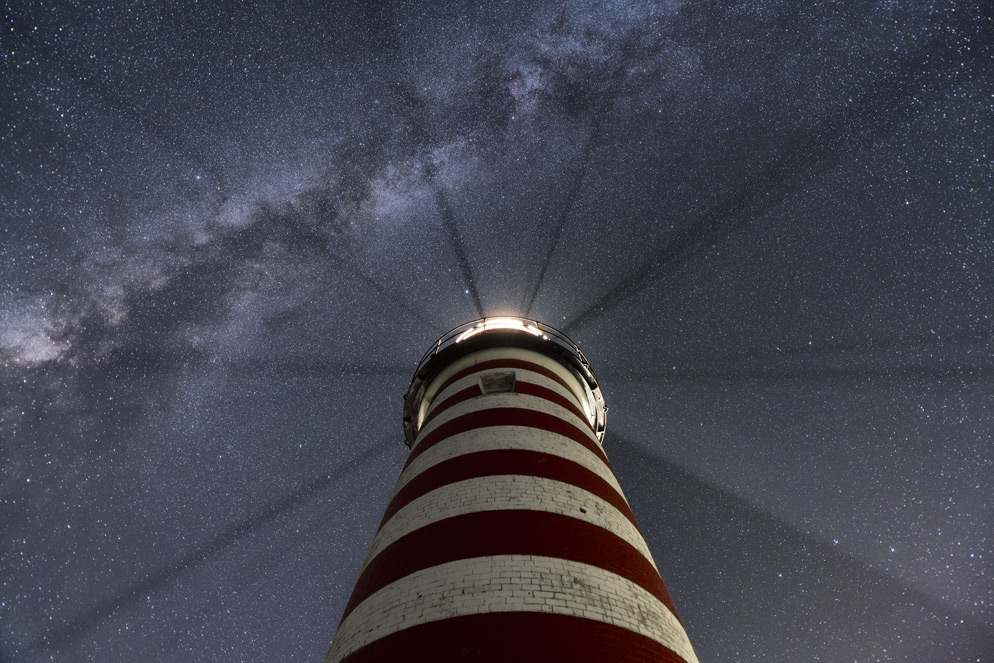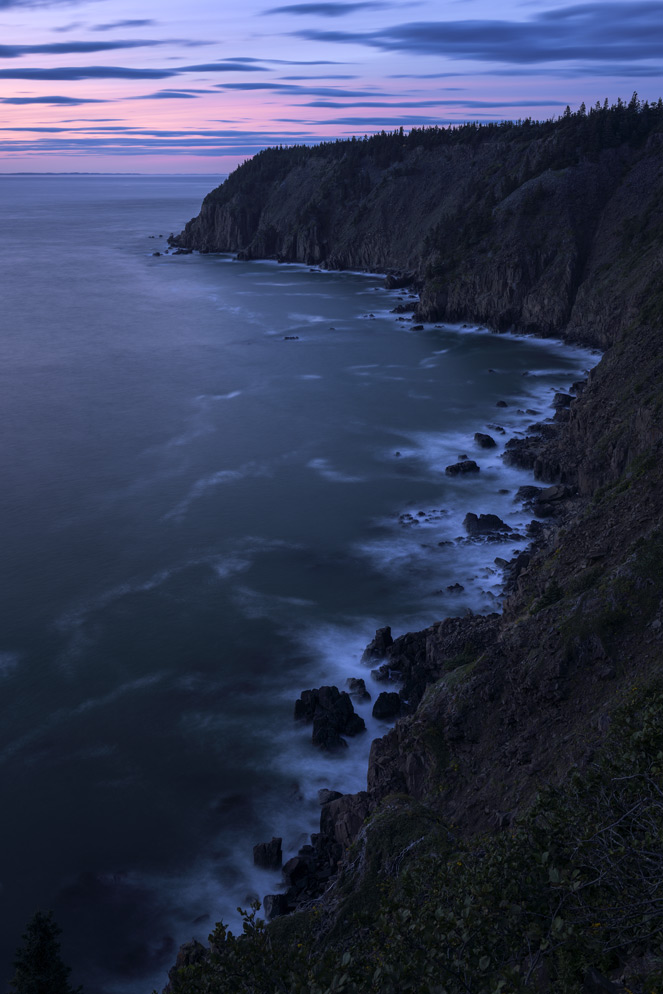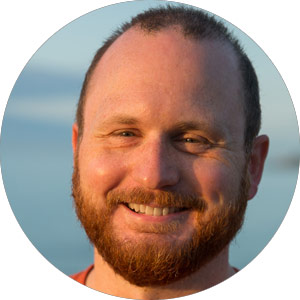D850: The Outer Limits
The D850 is a significant jump in high ISO performance, and with its high resolution, there's no trade-off. I'm getting the best of everything.
A D850 single shot of the Swallowtail Lighthouse at sunrise, Grand Manan Island, New Brunswick. Adam typically shows up a half-hour before sunrise for this type of photograph.
With the kind of photography Adam Woodworth specializes in, more things can go wrong than right. He shoots daylight landscapes, sunrises, sunsets and blue-hour photos, but his passion is push-the-limits images of the night sky. And those don't come easy.
"I'm lucky to get one or two a month," he says. There's unpredictable weather and dicey forecasts to contend with, plus miscalculations about tides—"It comes in too high and I have to scramble out of there"—and ideas about angles of view that just don't work out.
"Sometimes I'm at a location in daylight that I think will work," he says, "but at night I realize I didn't account for some lights that were nearby, or there's some light pollution that's worse than I thought it would be."
Winter Harbor, Maine, at the blue hour. A D850 single shot in a 30-second exposure with his tripod fairly low among the rocks in the rushing water.
There are also landscapes that in person don't look anything like the aerial view on the Internet map. And did we mention mosquitoes? Really angry, hungry mosquitoes?
Even if all things are working to best advantage, there's still the fact that to get the kinds of pictures he wants, he takes long exposures, and most often a lot of them, so he can use software to stack the best ones to truly capture what he sees. In the course of a night's shoot he may get only a handful of attempts at a result he considers successful.
Which means that the idea of a camera that makes the most of the times when things are going right...well, that's a pretty good idea.
The West Quoddy Head Lighthouse in Quoddy Head State Park, Lubec, Maine. Adam stacked ten shots of the sky and two of the foreground for this D850 image.
Enter the D850, which Adam had an early chance to test out on his favorite subjects at a few of his favorite night spots.
"When I first heard about the camera, the biggest thing for me was the image quality," he says. "Then there was the completely new design of the backside illuminated sensor, the high resolution and the overall general technology improvements since the D810. I wanted to see how well the camera would work at that high resolution and at high ISOs for the long-exposure photographs I take."
So what did the D850 deliver in return for his mix of sunrise, sunset and middle-of-the-night travels to photogenic locations?
A closer look and a different angle on the West Quoddy Head Lighthouse. Ten D850 images were stacked and averaged "for pinpoint stars and low noise" in this composite.
"Higher resolution meant less noise artifacts along the edges of the frames when I shot sky exposures of ten to 20 seconds at a really high ISO, like 12,800 or 25,600. And there was no discoloration along the edges of the sky I sometimes previously saw at high ISOs. It was edge-to-edge clarity—cleaner, with almost no noise on the edges of the frames. For me the D850 is a significant jump in high ISO performance, and with its high resolution, there's no trade-off. I'm getting the best of everything."
One feature of the camera surprised him: Focus Shift Photography—commonly called focus stacking—that allows for up to 300 images in increments of focus adjustment for images of uncommon depth and detail. "I didn't expect that," he says. "I'd sort of wished for it—I thought, Wouldn't that be cool if a camera could do that internally? I'll be trying it out for some daylight images. I think it's going to be a very exciting feature for landscape and macro photographers."
Two other features worked well for his night photography. "The illuminated buttons on the camera, and the flip up screen [Tilting Touch Screen]. The lit buttons for obvious reasons, and the screen because it gives me more flexibility and comfort when I've lowered the tripod for low-angle shots, and for mid-level shots as well."
With the D850 it's entirely possible that Adam's percentage of winners will increase. If only it could do something about the weather. And those mosquitoes.
A single shot of sunset at Southwest Head, Grand Manan Island. The ISO range of the D850 is expandable to 32 at the low range, which is what Adam used for this 30-second exposure.











